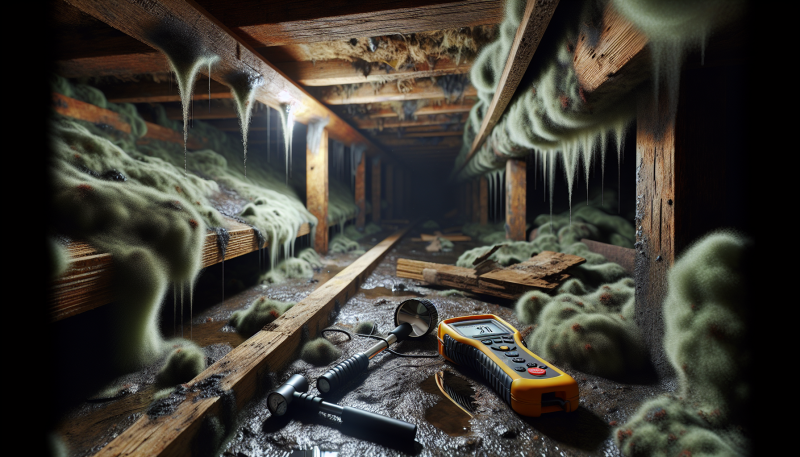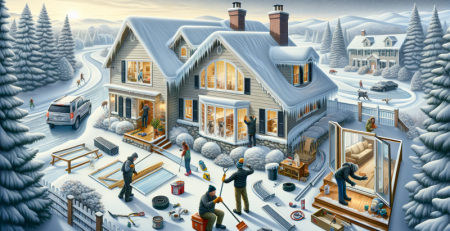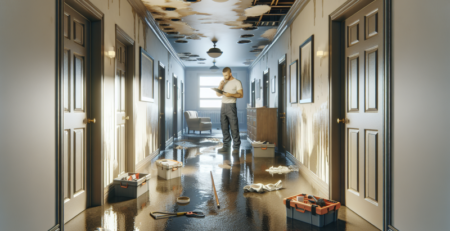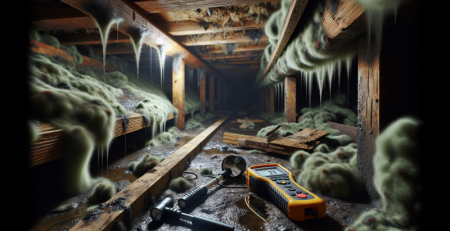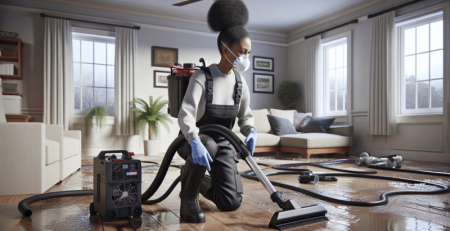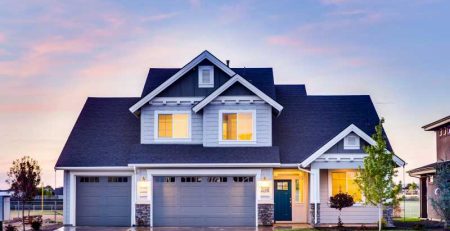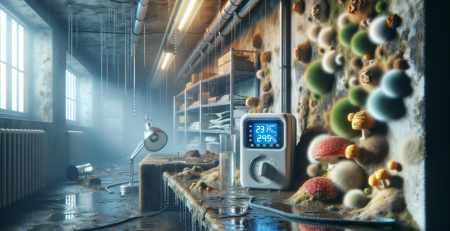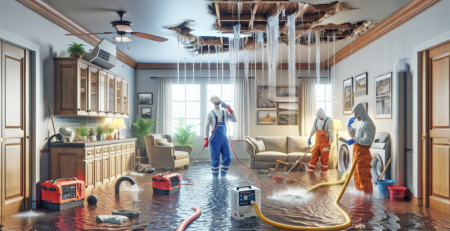Mold in Your Crawl Space: Detection and Solutions
Mold in your crawl space can be a hidden menace, often going unnoticed until it becomes a significant issue. At Kraus Restoration, NJ’s leaders in water damage restoration, we understand the importance of detecting and addressing mold problems promptly. Mold thrives in damp, dark environments, making crawl spaces an ideal breeding ground. If left unchecked, it can lead to serious health risks and structural damage to your home. Our mission is to help homeowners and property managers in Central and Northern New Jersey tackle these challenges head-on. With our comprehensive mold cleanup and remediation services, we ensure that your property is safe and healthy. Our IICRC certified experts are available 24/7, ready to respond within an hour of your call. Whether you’re dealing with water damage, mold issues, or fire cleanup, Kraus Restoration is here to restore your home and peace of mind. Contact us today to learn more about our effective solutions for mold detection and remediation.
Identifying Signs of Mold Growth in Your Crawl Space
Mold growth in crawl spaces is a common issue that can lead to significant structural damage and health problems if not addressed promptly. Identifying the signs of mold growth is crucial for homeowners to take proactive measures in maintaining a safe and healthy living environment. Mold thrives in damp, dark, and poorly ventilated areas, making crawl spaces an ideal breeding ground. Understanding the indicators of mold presence can help you act quickly to mitigate its effects.
One of the first signs of mold growth is a musty odor. If you notice a persistent, unpleasant smell emanating from your crawl space, it may indicate mold or mildew. This odor is often a result of mold spores releasing volatile organic compounds (VOCs) into the air. According to the Environmental Protection Agency (EPA), mold can produce over 100 different types of VOCs, which can contribute to indoor air quality issues.
Visual signs of mold are also critical to identify. Look for discoloration on walls, beams, or insulation in your crawl space. Mold can appear in various colors, including black, green, white, or even orange. If you see fuzzy or slimy patches, it is likely mold growth. Pay attention to areas that are consistently damp or have water stains, as these are prime locations for mold to develop.
Another important factor to consider is the presence of moisture. High humidity levels in your crawl space can create an environment conducive to mold growth. The ideal humidity level for mold growth is between 60% and 80%. You can use a hygrometer to measure the humidity levels in your crawl space. If the humidity exceeds 60%, it is advisable to take steps to reduce moisture, such as improving ventilation or using a dehumidifier.
Additionally, check for any signs of water intrusion. This could include puddles of water, leaks from pipes, or condensation on surfaces. Water intrusion not only provides the moisture mold needs to thrive but can also lead to structural damage over time. If you notice any leaks or standing water, it is essential to address these issues immediately.
In some cases, mold may be hidden behind walls or under flooring. If you suspect mold but cannot see it, consider conducting a thorough inspection. Look for signs of water damage, such as warped or discolored wood, which may indicate mold growth behind the surface. If you find evidence of water damage, it may be necessary to consult a professional for a more in-depth assessment.
It is also important to be aware of the health implications associated with mold exposure. According to the CDC, mold can cause a variety of health issues, particularly for individuals with respiratory conditions, allergies, or weakened immune systems. Symptoms can include coughing, sneezing, skin irritation, and in severe cases, respiratory infections. If you or your family members experience these symptoms and suspect mold exposure, it is crucial to seek medical advice.
To summarize, identifying signs of mold growth in your crawl space involves a combination of sensory observations and environmental assessments. Here are some key indicators to look for:
- A musty odor in the crawl space.
- Visible mold growth on surfaces.
- High humidity levels exceeding 60%.
- Signs of water intrusion or leaks.
- Water damage on walls or flooring.
- Health symptoms in occupants.
Taking these signs seriously can help you prevent mold from spreading and protect your home and health. If you suspect mold growth, it is advisable to contact a professional mold remediation service to assess the situation and provide effective solutions. For more information on how to address mold issues, visit our mold cleanup services page.
In conclusion, being vigilant about the signs of mold growth in your crawl space is essential for maintaining a healthy home. Regular inspections and prompt action can help mitigate the risks associated with mold and ensure a safe living environment for you and your family. If you need assistance or have questions about mold detection and remediation, do not hesitate to contact us for expert guidance.
Effective Strategies for Mold Remediation and Prevention
Mold growth in crawl spaces is a common issue that can lead to significant structural damage and health problems if not addressed promptly. Effective mold remediation and prevention strategies are essential for maintaining a safe and healthy environment in your home. The first step in addressing mold in your crawl space is to conduct a thorough inspection. Look for visible signs of mold, such as discoloration on surfaces, a musty odor, or water stains. It is also important to check for moisture sources, as mold thrives in damp conditions. Common sources of moisture in crawl spaces include leaks from plumbing, poor drainage, and high humidity levels.
Once you have identified the presence of mold, the next step is to contain the affected area to prevent the spread of spores. This can be achieved by sealing off the crawl space with plastic sheeting and using negative air pressure to keep spores from escaping into the rest of the home. Personal protective equipment, such as gloves, masks, and goggles, should be worn during the remediation process to protect against exposure to mold.
After containment, the actual mold removal process can begin. This typically involves cleaning surfaces with a mixture of water and detergent or a commercial mold remover. For porous materials that cannot be cleaned, such as insulation or drywall, it may be necessary to remove and replace these items. It is crucial to ensure that all mold is removed and that the area is thoroughly dried to prevent future growth. Dehumidifiers can be used to lower humidity levels in the crawl space, making it less conducive to mold growth.
In addition to remediation, implementing preventive measures is vital to avoid future mold issues. One effective strategy is to improve ventilation in the crawl space. This can be done by installing vents or using fans to promote air circulation. Proper drainage around the foundation of the home is also important to keep water away from the crawl space. Ensure that gutters and downspouts are functioning correctly and directing water away from the foundation.
Another preventive measure is to insulate the crawl space properly. Insulation helps to regulate temperature and reduce humidity levels, making it less likely for mold to thrive. Consider using vapor barriers on the ground and walls of the crawl space to further reduce moisture levels. Regular inspections of the crawl space should be conducted to catch any signs of mold or moisture early on.
If you are unsure about how to effectively remediate mold or prevent its return, it may be beneficial to consult with professionals who specialize in mold cleanup. They can provide expert advice and services tailored to your specific situation. Additionally, staying informed about the best practices for maintaining a healthy crawl space can help you take proactive steps in protecting your home. For more information on our services or to schedule an inspection, feel free to contact us today. Taking these steps will not only help in effective mold remediation but also ensure a safer living environment for you and your family.
In conclusion, addressing mold in your crawl space is crucial for maintaining a healthy home environment. Early detection is key; regular inspections and monitoring for signs of moisture can help you catch mold growth before it becomes a serious issue. If you do discover mold, it’s important to act swiftly and effectively, whether through DIY methods for minor infestations or by seeking professional help for more extensive problems. Implementing preventive measures, such as improving ventilation, controlling humidity levels, and ensuring proper drainage, can significantly reduce the risk of mold returning. By taking these proactive steps, you can protect your home and your family’s health from the harmful effects of mold. Remember, a clean and dry crawl space is not just an aesthetic concern; it’s an essential part of a safe and comfortable living space.
